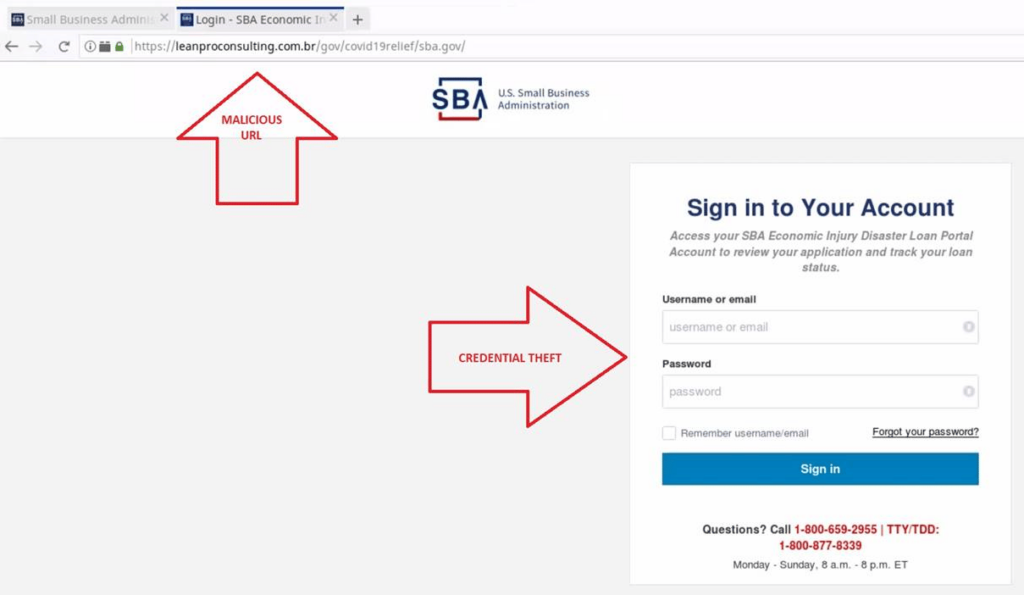Malicious Cyber Actor Spoofing COVID-19 Loan Relief Webpage via Phishing Emails
People First Since 1912
On Wednesday, August 13, 2020, we received the following communication from Cybersecurity and Infrastructure Security Agency (CISA), the cyber security division of Homeland Security.
CISA is currently tracking an unknown malicious cyber actor who is spoofing the Small Business Administration (SBA) COVID-19 loan relief webpage via phishing emails. These emails include a malicious link to the spoofed SBA website that the cyber actor is using for malicious re-directs and credential stealing.
CISA analysts observed an unknown malicious cyber actor sending a phishing email to various Federal Civilian Executive Branch and state, local, tribal, and territorial government recipients. The phishing email contains:
A subject line, SBA Application – Review and Proceed
A sender, marked as disastercustomerservice@sba[.]gov
Text in the email body urging the recipient to click on a hyperlink to address:
hxxps://leanproconsulting[.]com.br/gov/covid19relief/sba.govThe domain resolves to IP address:
162.214.104[.]246
Figure 1 is a screenshot of the webpage arrived at by clicking on the hyperlink.

CISA recommends the following mitigations including best practices to strengthen the security posture of an organization’s systems. System owners and administrators should review any configuration change prior to implementation to avoid unwanted impacts.
Include warning banners for all emails external to the organization.
Maintain up-to-date antivirus signatures and engines. See Protecting Against Malicious Code.
Ensure systems have the latest security updates. See Understanding Patches and Software Updates.
Disable file and printer sharing services. If these services are required, use strong passwords or Active Directory authentication.
Restrict users’ permissions to install and run unwanted software applications. Do not add users to the local administrators’ group unless required.
Enforce a strong password policy. See Choosing and Protecting Passwords.
Exercise caution when opening email attachments, even if the attachment is expected and the sender appears to be known. See Using Caution with Email Attachments.
Enable a personal firewall on agency workstations that is configured to deny unsolicited connection requests.
Disable unnecessary services on agency workstations and servers.
Scan for and remove suspicious email attachments; ensure the scanned attachment is its “true file type” (i.e., the extension matches the file header).
Monitor users’ web browsing habits; restrict access to sites with unfavorable content.
Exercise caution when using removable media (e.g., USB thumb drives, external drives, CDs).
Scan all software downloaded from the internet prior to executing.
Maintain situational awareness of the latest threats and implement appropriate Access Control Lists (ACLs). Sign up to receive CISA’s alerts on security topics and threats.
Sign up for CISA’s free vulnerability scanning and testing services to help organizations secure internet-facing systems from weak configuration and known vulnerabilities. Email [email protected] to sign up. See https://www.cisa.gov/cyber-resource-hub for more information about vulnerability scanning and other CISA cybersecurity assessment services.
